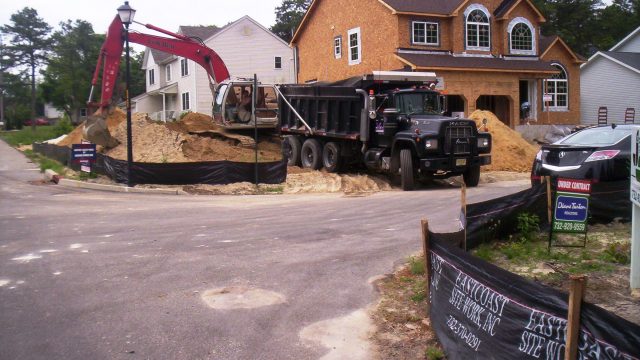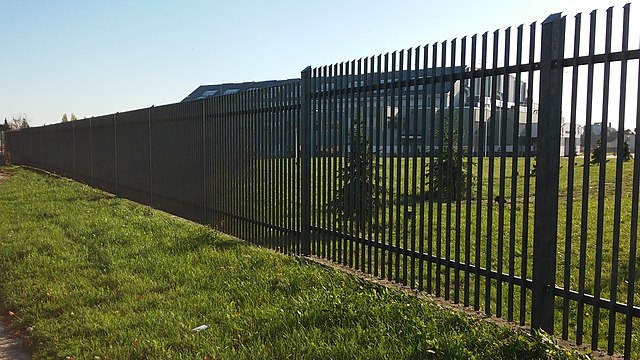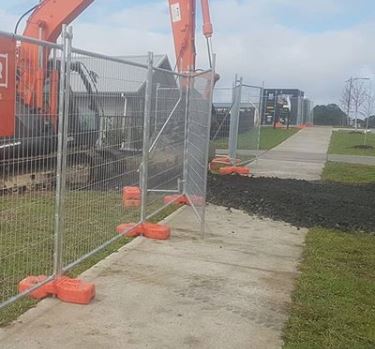
A silt fence is a temporary sediment barrier made of porous fabric. It’s inexpensive and relatively easy to remove since it’s held up by wooden or metal posts driven into the ground. The fabric contains and filters the liquid stormwater runoff filled with sediment and allows the solids to settle and stay onsite. 50 tons of sediment may be held in place by a single 100 foot (ft) run of silt fence. Although most construction sites have silt fences, many aren’t effective because of poor design and/or installation. Maintenance is also important for silt fence to work efficiently and remain effective.
To ensure silt fence functions as designed, consider these three principles: placement of fencing, sufficient amount of fencing, and optimal materials.
Placement of Silt Fence
Where a fence begins, runs, and ends is critical to its effectiveness. The construction site’s typography will determine how and where to place the silt fence. Divide the site into manageable sediment storage areas to create multiple silt fence runs. There should be no more than a quarter of an acre of drainage area above any fence. The drainage area is too large if water flows over the top of a fence during a normal rainfall. Long runs of silt fence could concentrate too much water into a small area where it will flow over the fence. Water will overflow at the lowest point of the fence along the contour. Incorrect placement can make the fence a complete waste of money.
Have the ends of the run turn up the slope to break up long fence runs. The bottom of each end of the fence should be higher than the top of the middle of the fence. This will create multiple smaller retention areas. The fence should create a ponding condition in order to work well and retain sediment. If not, stormwater will bypass the fence carrying sediment to the street and then to the storm sewer inlet. This defeats the purpose and will cause more erosion.
If the overflow in a heavy rain event goes over the top of the fence, rather than around the sides, only fine suspended material will spill over which is less harmful than having erosion at the ends.
When there is a long steep slope, you need to slow the water down and reduce the amount that flows downhill. Do this by installing one fence near the top of the slope and another fence 6–10 ft from the bottom of the slope to create a multiple sediment storage areas. You may think you only have to worry about water running off steep slopes, but those may have a relatively small water collection area. The total drainage area of a large gentle slope can lead to more erosion and sediment loss.
Do not place a silt fence in a channel with continuous flow. If needed, a silt fence can be placed parallel to protect a channel and exclude sediment before it enters the waterway.
Paved streets are major conduits of stormwater and silt, and they drain to storm sewer inlets. The goal is to eliminate as much sediment from going down into the storm drains as possible by keeping it onsite. By installing a silt fence at the inlet side of a storm sewer or culvert you can provide additional protection from sediment that may have passed over other control measures. Streets that haven’t been paved yet are also erosion conduits. Silt fence should be used as a containment barrier in these conditions. As the phases of construction shift, the silt fence layout should be adjusted to maintain its effectiveness.
In addition to the implementation of an effective silt fence layout, sediment-laden runoff water can also be diverted to a sediment detention pond. This is usually the best management practice for retaining sediment, if the site can provide a large enough area.
Enough Fencing
What’s the total linear length of the silt fencing you’ll need to run through the construction site? 100 ft of silt fence per 10,000 square foot (sq ft) of disturbed area is a good way to estimate for the proper amount of silt fence. Soil type, slope, slope length, rainfall, and site configuration are all factors that will influence how well this guideline fits a construction site. If fences are over-flowing after a moderate rainfall event, the amount of fencing probably needs to be increased to avoid undercutting, washouts, and fence failures. If the amount of fencing is adequate, then over-flowing the silt fence runs will be minimized.
Materials
All types of porous fabrics available tend to clog rapidly and don’t provide lasting filtration. The support posts and installation method are more important than the fabric type. A lightweight fabric is likely to tear where it is attached to the posts. Posts must hold the fabric up and support the horizontal load of retained water and sediment. 2” x 2” hardwood posts are potentially strong enough to support the loads. Steel posts are better for compacted areas because they can be driven to a depth of 2 ft. Posts should be spaced 3–4 ft apart where water may run over the top of the fence, 5 ft in most other areas, and 6–7 ft where there isn’t a considerable horizontal load.
Sagging fabric and falling posts are often caused by improper post depth. Wire or chain link supported silt fence is more robust and able to withstand heavy rain events.
Silt Fence Installation
Two commonly used approaches for installing silt fences are the static slicing method and the trenching method.
- Static Slicing Method
- The static slicing machine simultaneously inserts the silt fence fabric into a slit that is sliced in the ground by a narrow blade. Then a tractor wheel is rolled along both sides of the slit fence a few times to compact it. This compaction reduces the reduces infiltration so that water is less likely to find a pathway under the fence. Several tons of accumulated water and sediment can be supported by posts that are driven 2′ into well compacted soil. Complete the install by driving in the posts and attaching the fabric to them.
- Trenching Method
- This is a traditional, though potentially problematic method of installation. Trenching machines dig a trench for bury part of the filter fabric underground. The trench is usually about 6” wide and deep with curved walls reducing the ability to effectively compact the soil around the fence. Turns to follow site contour or upturn the ends of the run will make a wider trench, further reducing compaction. This allows infiltration under the fence, which causes soil erosion and sediment washout. The white line on the fence in Figure 16 and red arrow both mark the previous sediment level before the washout. The presence of the posts and fabric make compacting the soil more difficult. The best trenching method typically requires nearly triple the time and effort to achieve results compared to the static slicing method.
Fabric to Post Attachment
Proper attachment of the fabric to the posts is what delivers the combined strength of the fabric and support of the posts. The structure must be able to support 24” of sediment and water. For wooden posts use several staples per post, with a wood lath to overlay the fabric.
Inspection and Maintenance
Silt fences should be inspected regularly and after significant weather events to see if they are full or have been damaged by construction equipment. When sediment deposits behind the fence reach half the height of the fence, leave the sediment in place where it is stable and build a new silt fence above or below it to collect additional sediment. If this is not possible, or if there is insufficient space for another silt fence, the sediment behind the silt fence can be cleaned out. This is not ideal because the fabric will remained clogged, diminishing the efficacy of the fence, the fence could be damaged by the equipment being used to clean it out and there will be sediment that will need to be relocated elsewhere on the site during construction.
Permanent Soil Stabilization
Remove the silt fences and sediment basins when the soil disturbance has been sufficiently completed to allow permanent soil stabilization on the site. The sediment is spread over the site to provide fertile soil, and the area can be hydroseeded and mulched to support revegetation.
How Long Does Silt Fence Last?
The lifespan of silt fence can vary depending on several factors such as weather conditions, the quality of the product and site conditions. Generally, a standard silt fence can last from 6-12 months in optimal conditions if properly installed and maintained. Improper installation will lessen the lifespan. Extreme weather conditions such as heavy rain, high winds or snow can shorten the life of a silt fence.
Additionally, exposure to UV radiation from sunlight can cause the fabric to degrade, which can reduce its effectiveness over time. To optimize the lifespan of a silt fence, it’s important to install it correctly following the manufacturer’s guidelines and regularly inspect it to ensure that it remains properly installed and free of holes or tears. If the silt fence needs to be removed before the end of its expected lifespan, it is crucial to dispose of it properly to avoid environmental contamination.
When Can Silt Fence Be Removed?
At Eastcoast Site Work, we understand the importance of proper erosion control and ensuring that your construction site remains compliant with local regulations. As a leading erosion control company, we specialize in the installation, maintenance, and removal of silt fences, which act as temporary sediment control devices to protect nearby streams and maintain water quality.
Silt fences, also known as filter fences, are typically required during construction activities when there is a potential for fine soil particles to be washed away by stormwater runoff. These fences are often installed near sensitive areas like lakes or streams, where sediment-laden runoff could harm the aquatic ecosystem.
Once construction is completed and the surrounding soil has stabilized or is in the process of stabilizing, it’s essential to remove the silt fence in compliance with local regulations and permits. To determine if the soil is stable enough for silt fence removal, consider factors such as soil type, weather conditions, slope, vegetation growth, and any additional erosion control measures in place.
Our skilled team at Eastcoast Site Work utilizes wire-backed silt fences, which provide added stability through metal fence stakes. This ensures that the fence remains in place throughout the project duration, offering effective sediment control.
It is crucial to remove the silt fence as soon as it’s no longer needed to prevent deterioration and potential damage to the environment. If the silt fence becomes contaminated with sediment or other materials, our team will handle and dispose of it according to local and state regulations, ensuring your site remains environmentally friendly and compliant.
Trust Eastcoast Site Work for all your erosion New Jersey control needs, from determining when a silt fence is required to installing and removing these temporary sediment control devices. We’re committed to protecting our environment and preserving water quality for future generations.
Additional Resources
- Do You Need a Portable Temporary Fence for Your Construction Site?
- Where Does Stormwater Runoff Go?
- How Can Silt Fences Help Manage Stormwater Runoff?
- Commercial Chain Link Fence Types and Applications
- Read more about What is Soil Stabilization in Road Construction here.
- What is a retention pond and why is maintenance important?
- Types of Soil Erosion and Mitigation Strategies
For more information about silt fence usage, see https://www3.epa.gov/npdes/pubs/siltfences.pdf



